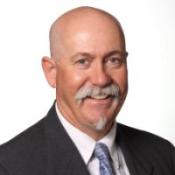 |
Dan Chudy has been a member of the State Historic Building Safety Board since 1994 and has served as both the Chairman and Vice Chairman. Prior to retirement, Dan was the Building Official for the City of Riverside for almost 25 years. He has amassed an impressive listing of educational degrees, which include a Ph.D. in Public Administration, a Master's Degree in Business Administration, and a Bachelor's Degree in Construction Management. In addition to his duties as a Building Official, Dr. Chudy is also a former instructor for the University of California in Riverside and Past President of the California Building Officials association. |
 |
Alan R. Dreyfuss joined WJE in 2007 with twenty-five years of experience in architectural design and historic preservation. Specializing in rehabilitation and adaptive reuse of historic structures, his projects have included commercial, institutional, and private clients and have ranged in scale from a one room, wood-frame school house to a brickand terra cotta-clad high-rise.Mr. Dreyfuss has experience in Historic Resource Conditions Assessments, Evaluation for CEQA and Section 106 compliance, Historic Structure Reports, National Register applications, and the application of Federal Historic Preservation Tax Credits.Mr. Dreyfuss is recognized as an expert in building codes for historic buildings. He was instrumental in the development of the 2001 and 2007 California Historical Building Code and is currently chair of the State Historical Building Safety Board. |
 |
Karin Liljegren, AIA, has been enthralled with urban environments throughout her life. Her career and company have focused almost exclusively on creating great design and services contributing to the Revitalization of Downtown LA.From 1999 through 2009 she design and led through construction 12 historic high rise adaptive reuse projects in Downtown Los Angeles as a Senior Associate with Killefer Flammang Architects.In 2009 she opened Omgivning. Omgivning is Swedish for ambiance, setting, and environment.Omgivning strengthens urban communities through architecture and interior design, emphasizing reuse. Since its 2009 inception, Omgivning has established itself and become a recognized firm in Downtown Los Angeles Architecture and Design. The firm's wide range of projects includes large nightclubs, neighborhood restaurants, historic theaters, large adaptive reuse projects, furniture design, and creative office.Omgivning has grown into a firm of 19 Architects and Interior Designers.
|
 |
Gwenyth Searer works on projects involving a wide variety of structural materials, including steel, concrete, timber, masonry, and aluminum. She also has significant experience evaluating facade access issues and existing claddings as well as peer review of new claddings.Ms. Searer has particular expertise in the field of earthquake engineering. Her experience includes the investigation of earthquake damaged structures after a number of major earthquakes, including Loma Prieta, Northridge, Turkey, Nisqually (Seattle), Tōhoku (Japan) and Napa. She has performed linear and nonlinear seismic analyses of concrete shear wall buildings, concrete and steel moment-frame buildings, steel braced frame buildings, unreinforced masonry structures, and wood structures. |
|
|




